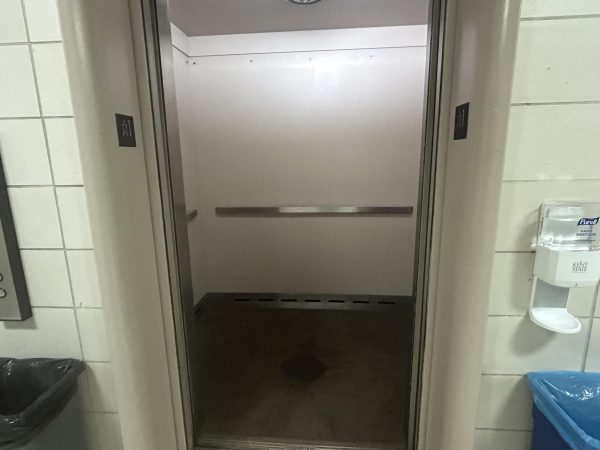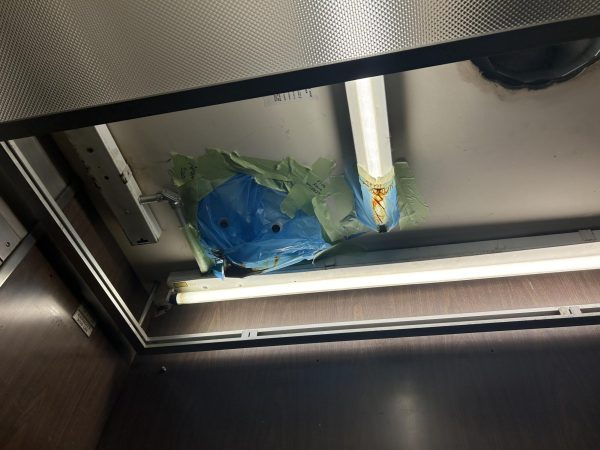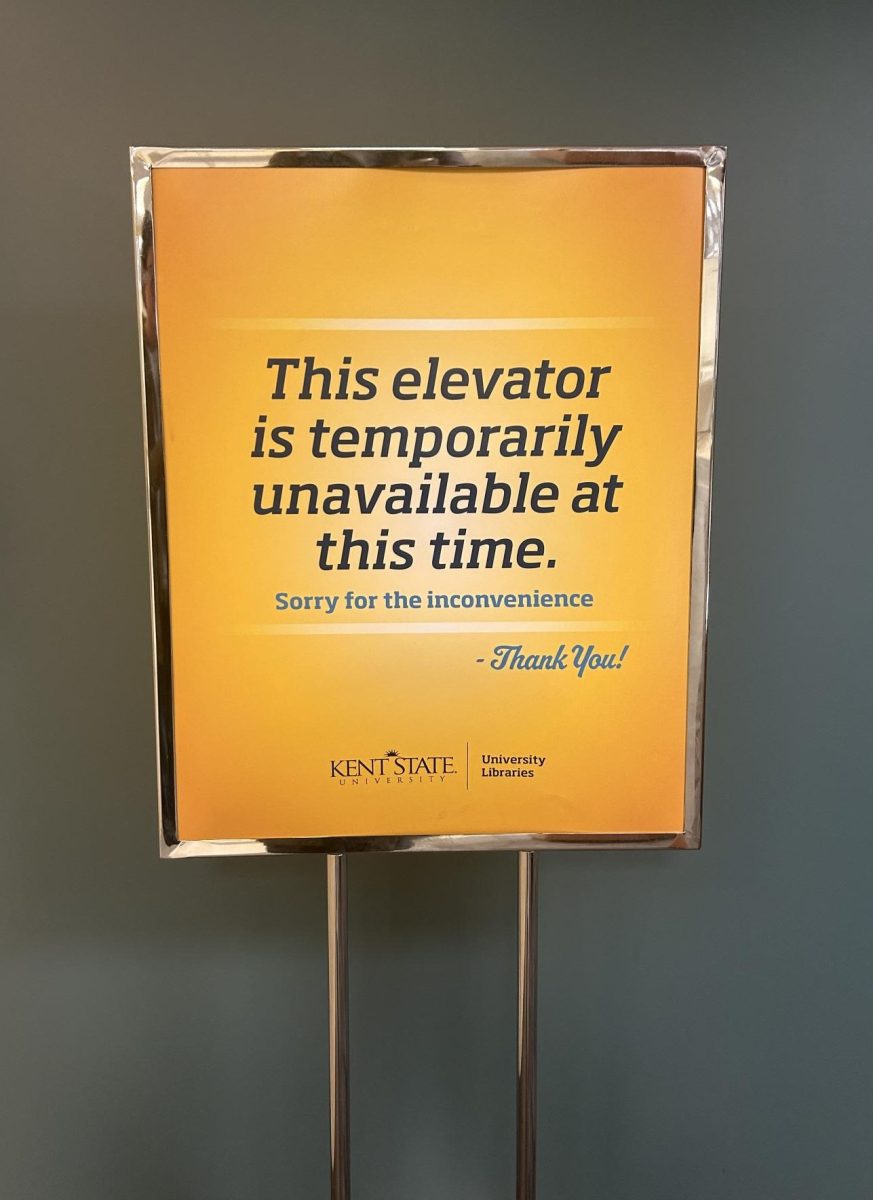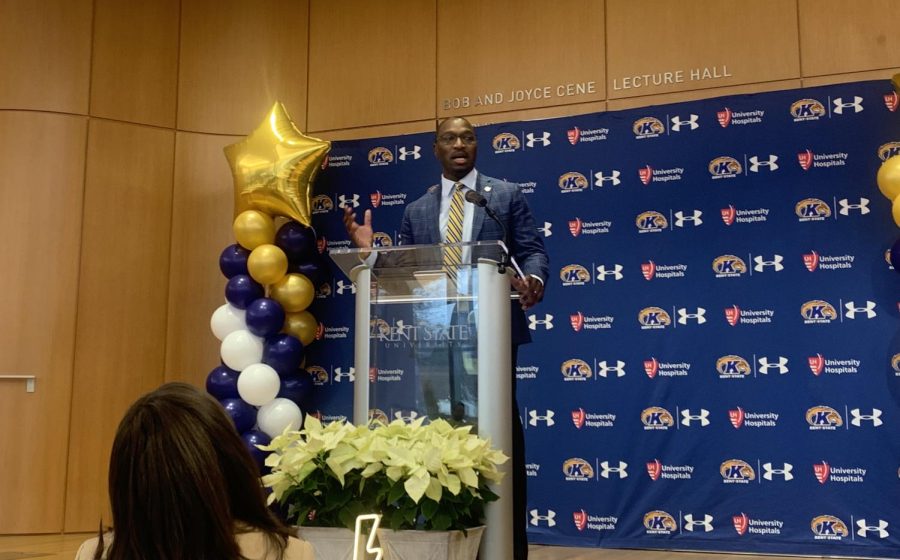Editor’s note: Alton Northup, an interviewee in the article, is a campus editor for The Kent Stater’s staff. He was included in this story because of the relevance of his experiences to the subject.
Elevator modernization for accessibility on the Kent Campus was approved to begin in 2025, which several students and professors described as much needed.
The university submitted a six-year plan detailing its most important renovation or replacement needs in each of the eight campuses, as per the request of the Ohio Office of Budget and Management. The university’s Board of Trustees approved the projects to take place between 2025 and 2030.

The first two years of the plan will include elevator modernization in the University Library and a general elevator modernization goal across the Kent Campus.
Jennifer Hedges, a graduate teaching fellow at the Kent campus, said she received the news positively. Hedges teaches classes in Satterfield Hall and recently found an issue with its elevator.
“Last semester is when I really started using the elevators because I’ve been having back problems, so going up and down steps is hard and even walking around campus has been difficult,” Hedges said.
Hedges had emergency spinal surgery on Jan. 18 after her symptoms worsened and said using the stairs went from difficult to nearly impossible. Upon increasing her usage of the Satterfield Hall elevator, Hedges said she experienced unnerving rides and frequent emails notifying her the elevator was down.
“Every time I’m in there, I have to keep my knees bent because I feel like it’s just going to slam down or slam up, and the frequency that it goes out, in addition to how it jerks you around: that’s scary,” Hedges said. “I’m in the elevator thinking, ‘Am I going to get out? Or is it going to shut down and I’m never going to get to class?’”
Hedges said the university’s elevator modernization plans are encouraging to hear, and she is hopeful the Satterfield Hall elevator will be a part of those projects.
“I just want to get to class, learn and leave, and students just want to get to class, learn and leave,” Hedges said. “There’s so many different perspectives on it.”
Alton Northup, a junior journalism major, experienced a separate incident with the Franklin Hall elevator in February.
When Northup was attempting to take the elevator from the first to the third floor, it stopped moving and would not open. After pressing other floor buttons in an attempt to exit, the elevator took Northup to the basement.
“So, I went to look for some stairs, but there’s no stairs out of there,” Northup said. “I waited for 10 minutes calling the elevator, but it wouldn’t come.”
After waiting for 10 minutes, Northup called the non-emergency line. Forty minutes later, maintenance workers opened a hatch in the ceiling for him to climb through with a ladder.
Northup said after the event occurred, he realized that he could have been stuck in the basement for a lot longer, and the situation could easily have been worse.

“What if you didn’t have your phone or what if your phone was dead?” Northup said. “You wouldn’t be able to contact anyone. Who knows if someone would have heard me if I was yelling because it was 6 p.m., so classes were pretty much done. That’s when I realized I could have gotten trapped down there, and no one would have known where I was.”
The implications of what would have happened if this happened to a student who was unable to climb a ladder set in for Northup, and it made him think about the elevator problems for students with mobility and accessibility issues.
“If you have people who rely on elevators to get around the building, that’s just removing the option for them,” Northup said.
Among other locations on campus, six million dollars is going to be spent towards modernizing the University Library’s elevators, while four million dollars was allotted to modernize the Kent Campus elevators for accessibility. The modernized elevators will be made to be compliant with the Americans with Disabilities Act, and will have a focus on improving the width, buttons and braille.
According to Douglas Pearson, associate vice president for Facilities Planning and Operations, a list of the top-10 worst elevators on campus was made for modernization consideration. Since the cost of these projects is around one million each, only two or three buildings will see newer accessibility.
The two buildings most likely to be focused on are Bowman and Satterfield Hall, Pearson said.
Pearson said the money for this plan will not be effective until July 1, 2025, which is when most hiring and planning will begin to take place.
“At that time, we would hire a designer, prepare construction documents, bid the project, and most likely, the work wouldn’t happen until 2026,” Pearson said. “We can’t spend any money until July 1.”
Kayla Gleason is a beat reporter. Contact her at [email protected].









Abby • Feb 26, 2024 at 6:58 pm
White Hall is another one where the elevators are insanely risky. Their doors open while the elevator is a foot from stopping, which could seriously hurt a new student that is unaware of this issue!!!
Sally • Feb 23, 2024 at 7:15 pm
I agree. I’m a disabled student and the elevator in Satterfield Hall is exactly as described. I worry about falling at every start & stop. Don’t they have maintenance contracts to periodically service these elevators?